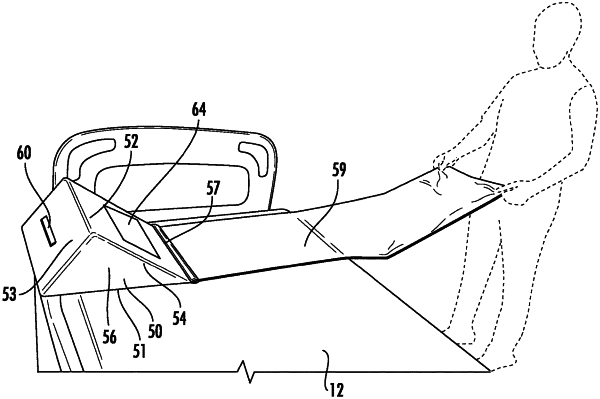| CPC A61G 7/1021 (2013.01) [A61G 7/001 (2013.01); A61G 7/057 (2013.01); A61G 7/0525 (2013.01); A61G 7/109 (2013.01); A61G 7/1086 (2013.01); A61G 7/1001 (2013.01); A61G 2200/16 (2013.01); A61G 2200/32 (2013.01)] | 8 Claims |

|
1. A method for positioning a patient, comprising:
positioning the patient on a patient support device;
placing a positioning apparatus between the patient support device and a support surface on which the patient support device rests, the positioning apparatus including:
a body comprising a front end, a first lateral side, a second lateral side, and a ramped surface between the first lateral side and the second lateral side;
a tail extending from the front end of the body, the tail comprising an elongated piece of material; and
a directional guide material coupled to or integrated with the ramped surface and configured to interface with the patient support device, wherein the directional guide material inhibits relative movement in a first direction between the patient support device and the positioning apparatus more than relative movement in a second direction between the patient support device and the positioning apparatus;
moving the tail longitudinally relative to the patient until the tail and the body are aligned with a desired location; and
moving the tail laterally relative to the patient, thereby moving the body underneath the patient to support the patient in a desired position.
|